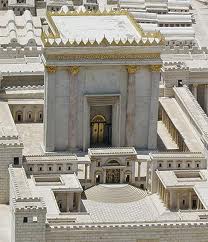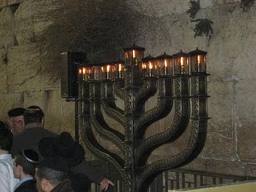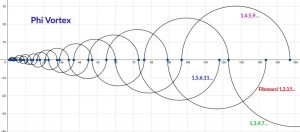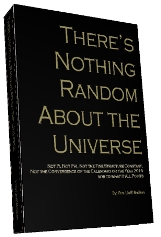The Mystery of the 1000 Generations
Aisha Torah published this excellent devrai Torah, but we wanted to add a couple notes to help clear up this Talmudic mystery, paradox if you will. We bring this matter up, because we are soon to write about the Erev Rav and their ties to the dating of the final redemption, and some have suggestion that the 974 generations mentioned in Mishna of the 1000 mentioned in Psalms are the original Erev Rav (we’ll get into that in another article).
As you’ll see profoundly discussed below and excerpted from Psalms 105:8-10, there are supposed to be 1000 generations (“He commanded to a thousand generations, the covenant which He made with Abraham, and his oath to Isaac. And confirmed the same to Jacob for a law, and to Israel for an everlasting covenant.” )
There are also supposed 974 generations created before creation, as excerpted from Chagiga 14, “Rabbi Shimon the Pious said: “These are the nine hundred and seventy four generations who pressed themselves forward to be created before the world was created….”
Readers of this blog and The Divine Calendar  know that (1000 -974) = 26 and that in all probability these 26 generations are the 26 generations from Adam to Moses when the Torah was revealed, fulfilling the statement above. but this is only a partial answer.
know that (1000 -974) = 26 and that in all probability these 26 generations are the 26 generations from Adam to Moses when the Torah was revealed, fulfilling the statement above. but this is only a partial answer.
We also know that the Covenant of Abraham was made in 2018 HC, 70 years after his birth in 1948 and that Israel became a nation in 1948 CE, 70 years before the fulfillment of the Zohar’s prophesy on 2018 CE (5778 HC) when Rav Yehuda Halevi Ashlag advised the Tree-of-life reality would be manifest.
So now let’s look at what was hidden in the 974 generations. First off, it is half 1948, or in other words 974 x 2 years = 1948. And as we learned in our recent article on Miketz and the Final Redemption, the Arizal advised us that “2 years (which Joseph spent in prison) was a hidden secret of when the journey to Moshiach would begin and end. He advised in was in 1976 CE, or as we saw, 42 years before 2018, also give by the gematria of 2 years (ShNTYM YMYM).
It’s simple math that reveals that (1000 + 974 + 2 years) = 1976, and also that (1000 + 974 – 26 years) = 1948, so it would appear there are indeed hidden codes given to us by King David in Psalms and Rabbi Shimon Bar Yochai of blessed memory.
Since everything in creation was created in two parts, we see that  974 years is exactly half the period to the birth of Abraham, and also exactly half the period from the destruction of the Second Holy Temple in 70 CE to 2018 CE (1948/2 years).
974 years is exactly half the period to the birth of Abraham, and also exactly half the period from the destruction of the Second Holy Temple in 70 CE to 2018 CE (1948/2 years).
We know also, as previously discussed that time is not statics and was greatly compressed in first few days before Adam’s creation and in the 2000 years that the Torah existed before Creation, easily accounting for the 974 generations. Nevertheless, lets say we take the paradox literally, and see how many generations there are until 5778 from the birth of Moses (the 26th generation), in order to complete the 1000 generations. As it turns out from 2368 (Moses’ birth) to 5778, there are precisely 974 generations of 3.5 (three and a half) years.
What is this end of days prophecy is this reminiscent of?
“time, times, and half a time” from Daniel 12:7
And
1290 days = 3.5 years from Daniel 12:11
So there you have it. There is no real paradox unless you want to take the Torah, Mishna, Tanakh completely literally and disregard what our sages knew that days, months, years, 1000’s and generations are interchangeable reflections of the same spiritual concept. Once you grasp that, you can begin to grasp the reality of the Tree-of-life where there are no physical limitations or illusions.
Happy Chanukah! 
From Aisha Torah:
Bereishit(Genesis 1:1-6:8)
The First Man
In the beginning, God created the heaven and the earth. And the earth was without form, and void; and darkness was upon the face of the deep. And a wind from God moved upon the face of the waters. And God said, “Let there be light;” and there was light. And God saw the light, that it was good; and God divided the light from the darkness. And God called the light Day, and the darkness he called Night. And there was evening and there was morning, one day. (Genesis 1:1-5)
With these epic words, the Torah, and indeed the world, begins. The beginning is clouded in mystery, perhaps allegory and allusion. The Mishna (Chagiga 11b) dissuades even the sage from attempting to penetrate the unfathomable.1 Nonetheless, there are hints about the dawn and predawn — or perhaps the term should be twilight — of creation in our tradition.2 When commenting on this Mishna, the Talmud makes an obscure reference:
Rabbi Shimon the Pious said: “These are the nine hundred and seventy four generations who pressed themselves forward to be created before the world was created, but were not created. The Holy One, blessed be He, arose and planted them in every generation, and it is they who are the insolent of each generation.” (Chagiga 13b-14a)3
There are those who were created, yet not created, who were “pressed” or contracted, and placed into future generations.4 Rashi explains this passage by presenting a verse in Psalms:5
He has remembered His covenant forever, the word He commanded to a thousand generations, the covenant which He made with Abraham, and his oath to Isaac. And confirmed the same to Jacob for a law, and to Israel for an everlasting covenant. (Psalms 105:8-10)
A cursory reading of this verse might lead to the understanding that the Torah is of limited scope and efficacy, for the verse speaks of a “mere” thousand generations. Rashi, however, explains that the Torah was given, not for a thousand generations, but to the thousandth generation. One could have simply attributed the term to vernacular usage and metaphor, citing other poetic uses of the “thousand years” or “thousand generations” coin of speech:
* * *
A THOUSAND
“A thousand” is used in a verse in Ecclesiastes describing the futility of man’s aspirations:
And though he live one thousand years twice told, yet has he seen no good; do not all go to one place? All the labor of man is for his mouth, and yet the appetite is not filled. (Ecclesiastes 6:6-7)
While we know that God transcends time, the Psalmist nonetheless utilizes this same “thousand” expression to describe Divine time:
A Prayer of Moses, the man of God: Lord, you have been our dwelling place in all generations. Before the mountains were brought forth, before you had formed the earth and the world, from everlasting to everlasting, You are God. You turn man back to dust; and say, ‘Turn back, O children of men!’ For a thousand years in your sight are but like yesterday when it is past, and like a watch in the night. (Psalms 90:1-4)
Apparently, Rashi did not want to allow the possibility of a misunderstanding, of the suggestion that the Torah has an expiration date — a “shelf life” of one thousand generations. Therefore, Rashi explains that the verse means the word of God was commanded to the “thousandth generation.”6
Rashi did not want to allow the possibility of a misunderstanding that the Torah has an expiration date.
Saying that the Torah was given to the thousandth generation does solve the problem of suggesting that the Torah is limited. On the other hand, a separate problem is presented: When one counts the generations in the Torah from Adam until Moses, far less than a thousand are enumerated. In fact, according to tradition, the Torah was given to the 26th generation.7
Rabbi Joshua ben Levi said: “To what do these twenty-six [verses of] ‘Give thanks’ correspond? To the twenty-six generations which the Holy One, blessed be He, created in His world; though He did not give them the Torah, He sustained them by His love.” (P’sachim 118a)
If the Torah was given to the thousandth generation, yet only twenty-six generations are discernible, nine-hundred seventy-four generations are “missing.” This, according to Rashi, is the lesson of the Talmud.
* * *
CREATED BUT NOT CREATED
According to this approach, both formulations are true: The Torah was given both to the thousandth generation and to the twenty-sixth generation. The solution lies in those who were “created but not created” before the world came into existence.
While this solution works mathematically, the theological implications seem challenging. The passage from the Talmud offered as an “explanation” is difficult to understand.
These are the nine hundred and seventy four generations who pressed themselves forward to be created before the world was created, but were not created. The Holy One, blessed be He, arose and planted them in every generation, and it is they who are the insolent of each generation. (Chagiga 13b-14a)
Were these people created or not? The entire passage seems paradoxical.
NOTES
- The [subject of] forbidden relations may not be expounded in the presence of three, nor the work of creation in the presence of two, nor [the work of] the chariot in the presence of one, unless he is a sage and understands of his own knowledge. Whosoever speculates upon four things, a pity for him! He is as though he had not come into the world, [to wit], what is above, what is beneath, what before, what after. And whosoever takes no thought for the honor of his Maker, it were a mercy if he had not come into the world. (Chagiga 11b) (return to text)
- The Torah describes the creation as twilight:
And there was evening and there was morning, one day. (return to text) - The Talmud in Shabbat also makes reference to these 974 generations:
R. Joshua b. Levi also said: “When Moses ascended on high, the ministering angels spoke before the Holy One, blessed be He: ‘Sovereign of the Universe! What business has one born of woman amongst us?’ ‘He has come to receive the Torah,’ answered He to them. Said they to Him, ‘That secret treasure, which has been hidden by Thee for nine hundred and seventy-four generations before the world was created.'” (Shabbat 88b) (return to text) - According to mystical tradition recorded in the Sefer HaBahir section 195, the souls of the 974 wicked generations are transmigrated into new bodies, who are then judged for deeds performed in the previous life. This is the Bahir’s explanation for theodicy. However, based on the Bahir’s context it sounds as if these people are presently righteous, while the Talmudic version makes these people sound presently wicked. See notes of Rav Reuven Margoliot in the Mosad Harav Kook edition, for other references in Kabbalistic literature. (return to text)
- Rashi is based on Kohelet Rabba 1:35. (return to text)
- This explanation is aided by the verse which follows:
And confirmed the same to Jacob for a law, and to Israel for an everlasting covenant. (Psalms 105:10) (return to text) - See Berishit Rabbah 1:4, 1:10, 21:9, Vayikra Rabba 9:3, Midrash Rabbah – The Song of Songs 2:6,5:13:
The mystics saw great significance in the Torah being given to the 26th generation, the number 26 is the numerical equivalent of the Divine name: Yud=10, heh=5, vav=6, heh=5 — equaling 26. (return to text)




